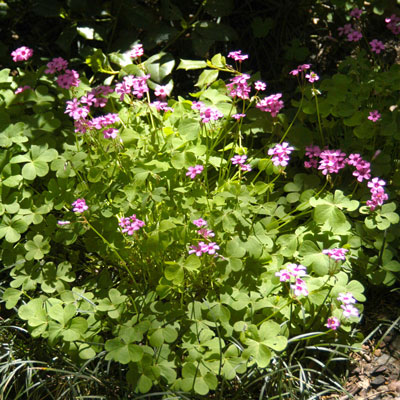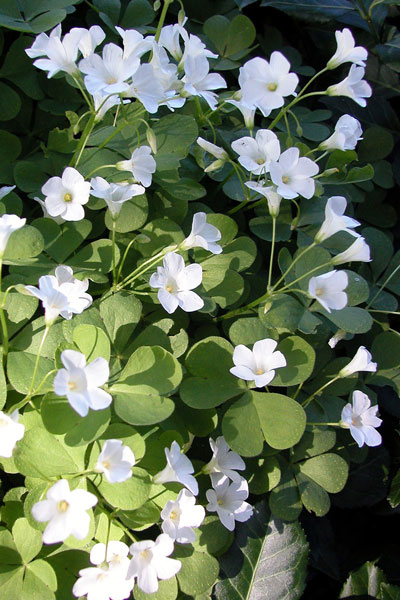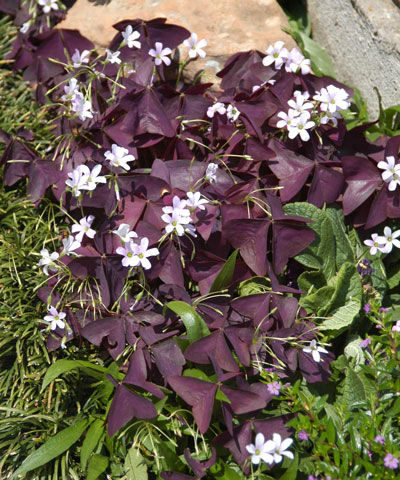Oxalis – Beloved and Behated
I’ve always loved the old-fashioned garden oxalis. It’s such a short name that’s all I ever called it. Every yard that I mowed had a border of it, and it’s always reminded me of spring and that school was just about out.


Back then oxalis was a passalong plant. You didn’t see it in nurseries. But it grew easily enough that everyone had it.
As perennials came back into vogue in the 80s and 90s, oxalis was right in there with them. And a newcomer started appearing in hanging baskets and pots, a purple-leafed type with the lengthy scientific name of Oxalis regnellii ‘Atropurpurea.’

I won’t take any credit for being the first to try it in beds, but I did have some plants that took root before I could get them planted, and before long they were happily growing in with my ferns and mondograss.

So that brings us to the less-popular side of this clan. Yellow wood sorrel (Oxalis stricta) looks like a cheerful buttery yellow wildflower, but it can be a horrific invader. If you get it started in flowerbeds it will quickly take over. If you don’t take good care of your lawn, there it will be.
But the worst place of all, says the voice of experience, is in collections of cacti and succulents. If it gets started, it will soon spread through the pots. If you try to pull it up by its stems you’ll find out why it spreads so aggressively. Its fruit are like tiny okra pods, each crammed full of seeds, and each tightly wound and ready to explode with a mere touch. The seeds are sent everywhere, and it seems like every one of them germinates.
Broadleafed weedkillers containing 2,4-D will eliminate the weedy oxalis from your home lawn, but you’ll want to use a pump sprayer so you can be very precise in applying the herbicide. And, add one drop of liquid dishwashing detergent to each gallon of weedkiller to help hold it on the waxy oxalis leaves. Read and follow label directions carefully to avoid damage to nearby shrubs and trees, also to St. Augustine.
As for the cultivated types of oxalis, they do best in the shade. They’ll grow and bloom well in the spring, then they’ll go dormant over the summer. You’ll see a surge of regrowth come fall, and the cycles will repeat year after year. Keep them moist. That’s about all that they ask.
